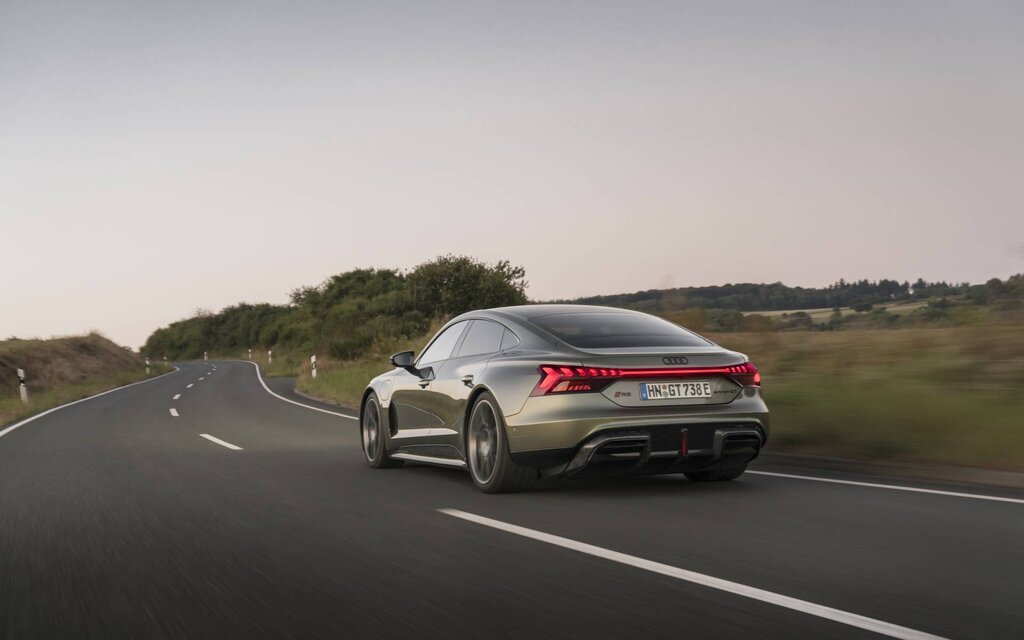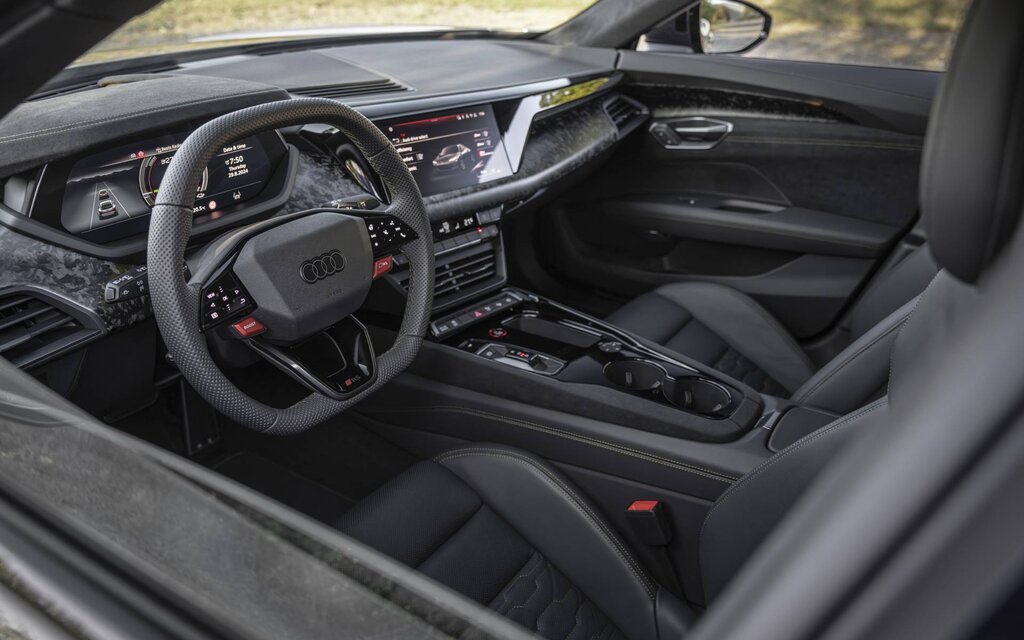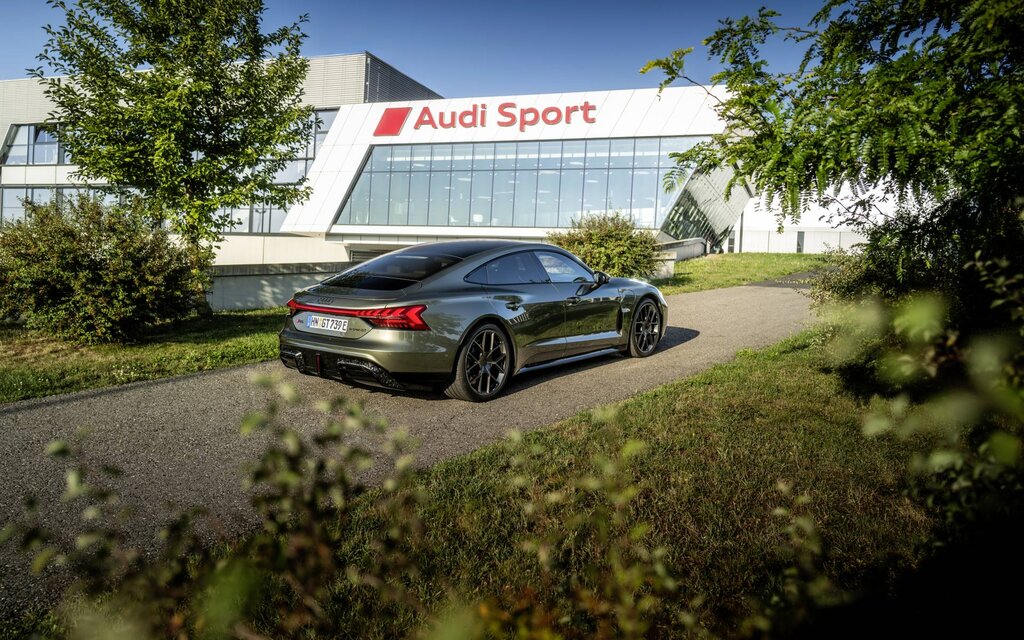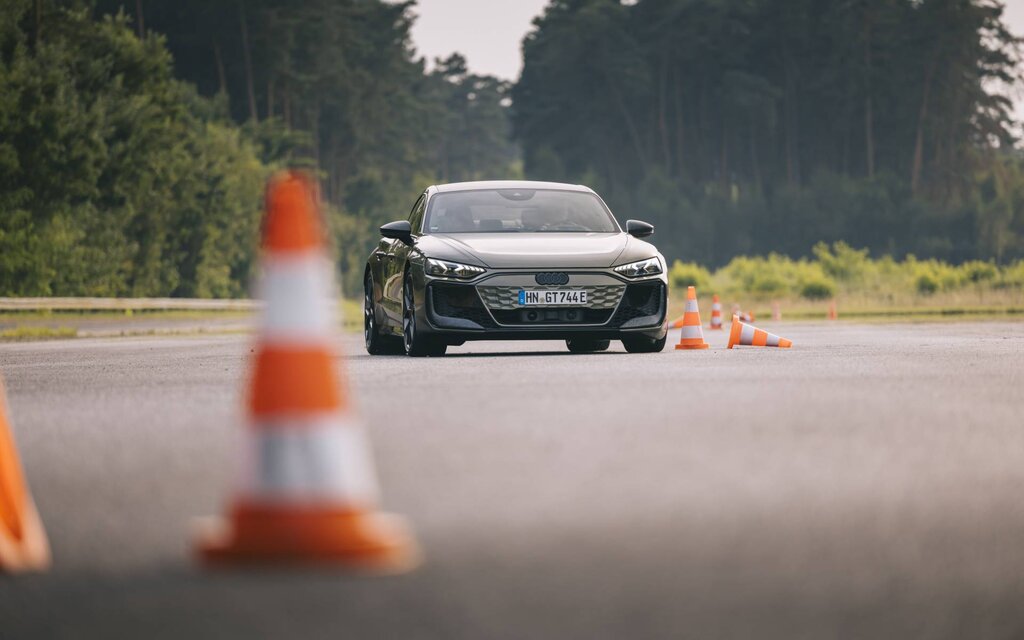2025 Audi RS e-tron GT Performance: Extra Power and Range is Icing on the Cake

| Strong points |
|
|---|---|
| Weak points |
|
Out on the autobahn, more specifically a section with no speed limit, the new 2025 Audi RS e-tron GT Performance displays exceptional stability as it reaches velocities in excess of 235 km/h. The main thing to watch for is vehicles in the right lane that could suddenly move over to the left lane to pass a slow truck, requiring a quick jab at the brake pedal.
That’s definitely not a problem, mind you, with our tester featuring carbon ceramic brakes that are easily up to the task. Heck, we could be driving even faster on that pool table-slick pavement, seeing how stable and poised the car remains, but the flow of traffic just won’t let us. Oh well, driving in Germany still beats a whole lot of things.
- Also: All-New 2026 Audi A6 e-tron Debuts as Sleek Electric Sportback
- Also: 2025 Audi e-tron GT Lineup Debuts With Unprecedented Power

Increased Range
For the 2025 model year, Audi has upgraded the e-tron GT electric sports sedan. The lineup now includes three trim levels—S e-tron GT, RS e-tron GT and RS e-tron GT Performance—all of which benefit from increased battery capacity at 105 kWh (net 97 kWh) thanks to new chemistry. Battery temperature management is improved, too.
Maximum range is increased in the process, and DC fast charging is possible at up to 320 kW until the battery reaches 65 percent charge, then drops to 200 kW. Charging from 10-80 percent is a matter of 18 minutes only in ideal conditions. We started the day with a 95 percent charge and an estimated range of 464 km. The plan was to hit a few stretches of autobahn with no speed limit as well as some twisty country roads, which explains why we ended up with combined energy consumption of 27.6 kWh/100 km.

More Power
The electric four-door grand tourer from Ingolstadt packs more muscle in every configuration thanks to a smaller, lighter and more powerful rear motor along with revised front motor and inverter management.
Want the numbers? Here you go: the S e-tron GT generates 670 horsepower and 529 lb-ft of torque, the RS e-tron GT is good for 845 horsepower and 638 lb-ft of torque, while the RS e-tron GT Performance delivers an incredible 912 horsepower and 757 lb-ft of torque. They can sprint from 0-100 km/h in 3.4 seconds, 2.8 seconds and 2.5 seconds, respectively.

Push-to-Pass Delight
As if the 912 horsepower of the Performance model weren’t enough, a Push-to-Pass function unleashes an extra 95 ponies for 10 seconds when drivers push a button on the steering wheel. We activated the system at one point on a suburban road and zoomed past a slower vehicle in no time.
As for acceleration from a standstill, it can only be described as neck-snapping and nearly violent. The car feels like the Millenium Falcon shooting across the universe, but always in a controlled fashion.

Optional Active Suspension
An adaptive air suspension comes standard for 2025, but a new, wheel-selective active suspension developed with ZF is optional. Unlike an adaptive system that responds to the car’s body movements, this one can initiate different responses to control those body movements more effectively. It uses twin-tube dampers with continuous damping control of both compression and rebound, plus a hydraulic circuit connecting the upper and lower chambers. Four 5kW motors fed by the car’s 800V electric architecture work to adjust the suspension up to 13 times per second.
Not only that, but the active suspension can also raise the rear end of the car by 22 mm under hard acceleration to prevent it from squatting and keep the body level. Conversely, it will raise the front end by 22 mm to prevent nosedive under hard braking. In corners, the new suspension handles lateral acceleration to significantly reduce body roll. Audi engineers haven’t completely eliminated body roll, mind you, as they wanted cornering to feel more natural and help drivers identify the car’s limits. Having experienced the system both on public roads and a closed course, we have to say we’re extremely impressed.
Oh, and one more thing: the active suspension automatically raises the car by 77 mm when a door handle is pulled to make ingress and egress easier.

Unique Styling
Steering is now quicker and more precise, with the RS e-tron GT Performance riding on standard 20-inch wheels or available 21-inch wheels that are wrapped in specially developed Bridgestone Potenza Sport tires using 55 percent recycled components. Also setting the Performance model apart are unique body elements such as a vertical spine in the middle of the rear diffuser.
The optional matte darkened carbon roof can be combined with other optional carbon camouflage elements, which Audi is using for the first time and are available exclusively for this model. Carbon camouflage is used in the inlays in the bumper, the rocker panels, parts of the diffuser and the side mirrors. An electrochromic glass roof, similar to the one on the 2025 Audi Q6 e-tron crossover, is also available.

Coming in 2025
With increased battery capacity, range and DC charging speeds, the 2025 Audi e-tron GT addresses the main complaint about its predecessor, while enhanced performance and handling make it even more attractive. The S e-tron GT and RS e-tron GT will go on sale in Canada in the first quarter of next year as 2025 models. Pricing will be announced closer to launch, but customers can expect to pay a little more than they do right now. And as always, options will be expensive.











